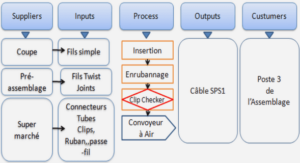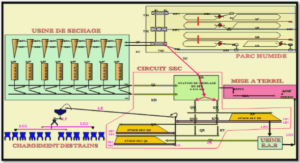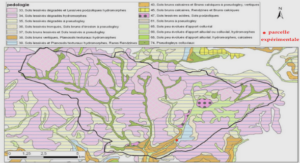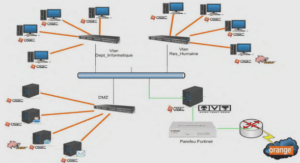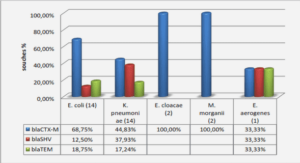Sample preparation and stable isotope analyses
DETECTING PAST SPRUCE BUDWORM INFESTATIONS: RING WIDTHS VS ISOTOPIC COMPOSITION OF ARTIFICIALLY DEFOLIATED BALSAM
ABSTRACT
During a four-season controlled experiment, Abies balsamea seedlings were artificially defoliated to different percentages (levels) to reflect both current (0, 33, 66 and 99%) and past (0, and 50%) year foliage loss. The experiment was designed to clarify the physiological nature of the physical and chemical responses by studying the light-saturated CO2 assimilation rate (A) and stomatal conductance (gs), tree ring widths (TRW) and the corresponding 813C and 518O. Seedling TRW were observed to be significantly reduced after the second through fourth growing seasons with increasing levels of defoliation. Past-year defoliation additionally reduced TRW. An overall positive relationship was detected between tree-ring holo-cellulose 613C (513ChC) and defoliation magnitudes for the three first seasons. The absence of a significant relationship between the intracellular to ambient CO2 ratio (c/ca) and defoliation treatments suggests a post-carboxylation mechanism to explain the ô13Chc enrichment such as the mobilization of 13C-enriched reserves for cell development during the tree ring formation. Early ô13Chc response to defoliation compared to TRW suggests that carbon isotopes may be a more useful and precise tool in the detection of spruce budworm outbreaks in dendrochronological reconstructions. This study helps bolster the utility of combining both traditional TRW and more recent 513C techniques to detect past spruce budworm infestations in the eastern boreal forest. The study also illustrates the possibility of similarly reconstructing other insect defoliation episodes in other regions.
INTRODUCTION
Annual rings of trees growing within temperate to boreal forest ecosystems respond both physically and isotopically to a variety of environmental and biophysical influencing and forcing factors. As a result, correlations between the widths and densities of tree rings, their isotopic compositions (carbon, oxygen and hydrogen), and climate parameters such as temperature, precipitation amount, relative air humidity and hydrological growth setting have been extensively reported (Burk & Stuiver, 1981; Feng & Epstein 1994; Buhay & Edwards 1995; Robertson et al. 2001; McCarrol & Loader 2004; Verheyden et al. 2004). Where significant, these relationships have resulted in many
informative reconstructions of past climate and environmental conditions in various regions of the world (Jacoby & D’Arrigo 1995; Brooks, Flanagan & Ehleringer 1998; Gagen, McCarroll & Edouard 2004; Cook, Esper & D’Arrigo 2004; Treydte et al. 2006; Kirdyanov et al. 2008). However, specific site conditions related to canopy light and nutrient levels or soil and substrate water resources, for example, can sometimes have an effect on these relationships (Dupouey et al. 1993; Saurer, Siegenthaler & Schweingruber 1995; Saurer et al. 1995, 1997; Kagawa et al. 2003; Buhay et al. 2008). Site disturbances such as forest fires, selective leaf cuttings or thinning and insect defoliation have also been shown to directly influence plant growth and isotopic compositions (Morrow & Lamarche 1978; Leavitt & Long 1986; Morin 1994; Trotter, Cobb & Whitham 2002; McDowell et al. 2003; Simard et al. 2008). Defoliation of trees by insects is of particular interest in the boreal forest of eastern North America since spruce budworm (Choristoneura fumiferana Clem.)
outbreaks are one of the main disturbances affecting the forest dynamics and reservoir stocks of balsam fir [Abies balsamea (L) Mill.], white spruce [Picea glauca (Moench) Voss] and black spruce [Picea mariana (Mill.) B.S.P] (Morin 1994). It would be advantageous both in terms of forest ecology and management strategies to be able to confidently identify past spruce budworm defoliation episodes in order to reconstruct the long-term dynamics of such outbreaks. This information would allow forest managers and ecologists to understand the outbreak dynamics and better predict their behaviour in the context of possible climate change effects on the boreal forest. Moreover, in a context where ecosystem based management is generally considered the most promising approach to the maintenance of healthy and resilient forest ecosystems, it is essential to better assess the long-term variability of insect related disturbances (Gauthier et al. 2008). Historical accounts (since the late 1930s) provide adequate information on severe spruce budworm outbreaks in the 1950s and 1970s. However, the real potential in reconstructing longer and more meaningful outbreak records lies in the absolute chronological nature of the annual rings in trees of the northeastern boreal forest (between 200 to 250 years old on average (Viereck & Johnston 1990; Frank 1990; Nienstaedt & Zasada 1990), and the possibility of using historical wood (Krause 1997; Boulanger & Arsenault 2004) and subfossil wood (Simard 2003) to extend reconstructions back in time. It seems reasonable to assume that the residual physical effects of needle defoliations related to spruce budworm outbreaks would be readily identifiable through traditional dendrochronological methods. In fact, this was not the case in a previous reconstruction attempting to extend chronologies back in time using older material such as subfossil wood buried in peatlands (Simard 2003). The standard methodology to identify insect outbreaks in a dendrochronological perspective relies on the comparison of radial growth patterns of host and non-host trees (Biais 1962; Swetnam, Thompson & Sutherland 1985). However, this approach is unlikely to be used in this environment due to the inherent difficulties encountered while building chronologies from subfossil trees, non-host tree species being rarely found in sufficient numbers. Moreover, while traditional dendrochronological methods are sensitive to severe spruce budworm defoliation episodes, they are not reliable indicators of moderate to light defoliation episodes and, consequently, provide inaccurate estimates on the duration of these outbreaks. A recent and relatively non-traditional dendrochronological stable isotope treering survey of historical spruce budworm outbreaks (1950-1960; 1970-1980), extracted from mature host and non-host conifers from the boreal forest, produced definitive carbon isotope enrichment signatures in both severely and more lightly defoliated trees (Simard et al. 2008; chapitre 1). Host-tree enriched carbon isotope signals and reduced ring widths directly corresponded with the two last spruce budworm outbreaks in the northeastern boreal forest while oxygen isotope series showed regular amplitude variations consistent through time similar to the oxygen series of a non-host species used for comparison. To further investigate the use of ring widths and carbon and oxygen isotope tree-ring compositions to identify spruce budworm outbreaks, a controlled experiment involving different magnitudes of artificially defoliated balsam fir
seedlings was conducted. This study was designed to determine the relationships between defoliation magnitudes and annual tree-ring widths, holocellulose carbon and oxygen isotopic compositions and plant physiology (CO2 assimilation rate and stomatal conductance) over four growing seasons. Based on the evidence from Simard et al. (2008), reduced carbon isotope discrimination in response to increased levels of defoliation reflected by a corresponding carbon isotopic enrichment of the balsam fir tree-ring cellulose is expected, with no analogous effects on the oxygen isotopic compositions. Treering width reductions are anticipated in rings of the most severely defoliated trees with increasing seasonal impact on radial growth.
|
Table des matières
REMERCIEMENTS
TABLE DES MATIÈRES
LISTE DES FIGURES
LISTE DES TABLEAUX
RÉSUMÉ GÉNÉRAL
INTRODUCTION GÉNÉRALE
CHAPITRE I
1.1 ABSTRACT
1.2 INTRODUCTION
2.1 Background
1.3 METHODS
1.3.1 Study area and samples
1.3.2 Sample preparation and stable isotope analyses
1.4 RESULTS
1.4.1 Ring width analysis
1.4.2 Carbon and oxygen isotopes
1.5 DISCUSSION
1.6 CONCLUSION
1.7 ACKNOWLEDGEMENTS
1.8 REFERENCES
1.9 TABLES AND FIGURES
CHAPITRE II
2.1 ABSTRACT
2.2 INTRODUCTION
2.3 MATERIAL AND METHODS
2.3.7 Plant materials
2.3.2 Experimental design
2.3.3 Gas exchange measurements
2.3.4 Sample preparation and stable isotope analyses
2.3.5 Statistical analyses
2.3.5.1 Height and diameter variables
2.3.5.2 Stable isotopes and tree ring width variables
2.3.5.3 Gas exchange
2.4 RESULTS
2.4.1 Morphological variables
2.4.2 Tree-ring stable isotope composition and seedling radial growth
2.4.3 Gas exchange
2.5 DISCUSSION
2.5.1 Young vs mature trees
2.6 CONCLUSION
2.7 ACKNOWLEDGEMENTS
2.8 REFERENCES
2.9 TABLES AND FIGURES
CHAPITRE III
3.1 ABSTRACT
3.2 INTRODUCTION
3.3 METHODS
3.3.7 Study area
3.3.2 Cellulose extraction and S13C and S18O determination
3.3.3 Stable isotopes criteria for spruce budworm outbreak identification
3.4 RESULTS
3.5 DISCUSSION
3.6 CONCLUSION
3.7 ACKNOWLEDGEMENT
3.8 REFERENCES
3.9 TABLES AND FIGURES
CHAPITRE IV
4.1 ABSTRACT
4.2 INTRODUCTION
4.3 METHODS
4.3.1 Study area
4.4 RESULTS
4.5 DISCUSSION
4.6 CONCLUSION
4.7 REFERENCES
4.8 TABLES AND FIGURES
CONCLUSION GÉNÉRALE
BIBLIOGRAPHIE GÉNÉRALE
![]() Télécharger le rapport complet
Télécharger le rapport complet

